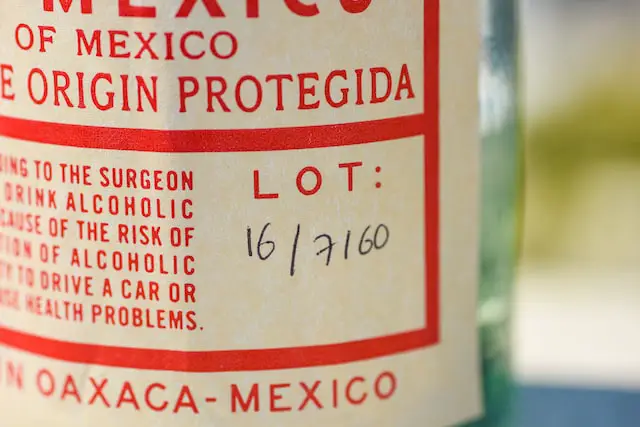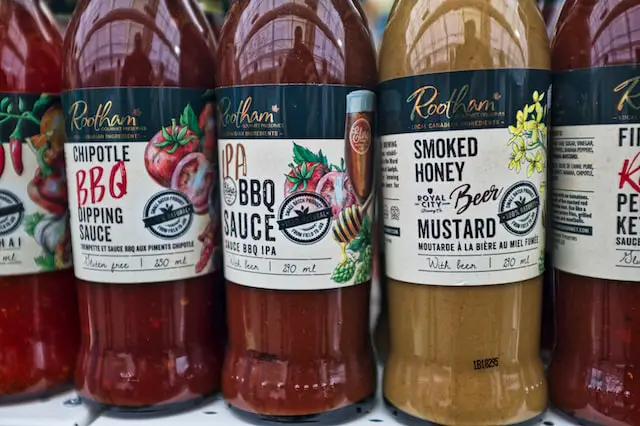Misbranding refers to when a product is labeled or marketed in a way that is misleading, false, or not in compliance with regulations. Adulteration refers to when a product is mixed or tampered with in a way that makes it unsafe or of lower quality than what it is represented to be.
Definition of Misbranding
(Photo by YesMore Content on Unsplash )

Misbranding refers to the labeling, packaging, or marketing of a product in a way that is false, misleading, or not in compliance with regulations. This can include things such as providing false or misleading information about a product’s ingredients, benefits, or safety, or failing to include required information on the label. Misbranding can also refer to making false or misleading claims about a product’s effectiveness or using deceptive marketing practices.
Definition of Adulteration
Adulteration refers to the process of making a product impure or inferior by the addition of extraneous or unwanted ingredients or the removal of essential ones. It can also refer to the product resulting from such process. This can include things such as mixing a product with cheaper or lower-quality ingredients, or adding harmful substances to a product. Adulteration can also occur through physical or chemical means such as using pesticides or other chemicals on food products, or adding water to milk. In general, Adulteration refers to the act of altering the product from its original natural state and compromising the safety or quality of the product.
What is the difference between adulteration and adulterants?
Adulteration refers to the process or act of making a product impure or inferior by the addition of extraneous or unwanted ingredients or the removal of essential ones. It is the act of altering a product from its original natural state and compromising the safety or quality of the product.
Adulterants, on the other hand, are the substances or materials that are added to a product to make it impure or inferior. They are the specific ingredients or contaminants that are introduced to a product during the process of adulteration, and they can be harmful or dangerous to consume. Examples of adulterants can include things such as chemicals, fillers, or other substances that are added to food or supplements to make them cheaper or increase their volume.
What is an example of adulteration?
Adulteration is the process of adding something to a product that wasn’t meant to be there, and it can lead to safety concerns. There are a few different types of adulteration: intentional, accidental, and fraudulent.
Intentional adulteration is when a company knowingly puts something into their product that isn’t supposed to be there. This could be anything from adding dangerous chemicals to changing the recipe so that the product contains more sugar or calories than it should. Accidental adulteration happens when something goes wrong during the manufacturing process and substances are added that weren’t meant to be in the final product. Fraudulent adulteration occurs when companies deliberately lie about what’s in their products, trying to deceive consumers. This could involve taking shortcuts with ingredients or using fake labels. All three of these types of adulteration have consequences for both consumers and the environment.
There are a few ways that you can identify whether a product has been adulterated: look for discrepancies in the ingredients list, look for fake labels, or smell the product and see if it smells strange or has an unusual smell. If you have any doubts about whether a product is safe, don’t buy it – contact your local health department or food safety authorities for more information.
What is an example of misbranding?
An example of misbranding is when a product has been labeled in a way that is misleading or deceptive to the consumer. This could include labeling a product as being healthy when it is not, or labeling a product with false claims about its ingredients. Adulteration is another form of misbranding, and refers to the use of fake or inferior ingredients in a product. This can make the product dangerous for consumers and can lead to health problems.
How do you identify adulteration?
If a product has been tampered with in any way, it can no longer be considered safe or healthy to consume. This can include altering the ingredients, adding unauthorized additives, or replacing quality ingredients with cheaper versions. There are many ways to identify adulteration, but some of the most common indicators include:
- The presence of unauthorized substances
- Unusual chemical reactions
- Irregularities in the product’s color or texture
When it comes to food safety, it’s important that consumers know the difference between misbranding and adulteration. When a product is misbranded, its labeling is inaccurate or misleading. For example, if a product contains artificial flavors instead of natural flavors, this would be considered a misbranding. On the other hand, if a product has been adulterated by adding unauthorized substances or incorrect ingredients, it would fall into this category.
How do you identify misbranding?
There are several ways to identify misbranding of a product:
- Check the label: Misbranding can include providing false or misleading information about a product’s ingredients, benefits, or safety, or failing to include required information on the label. Look for any discrepancies or missing information.
- Verify the claims: Misbranding can also refer to making false or misleading claims about a product’s effectiveness. Check the product’s label, packaging, or website to see if the claims are supported by scientific evidence.
- Look out for deceptive marketing practices: Misbranding can also include using deceptive marketing practices. Be wary of products that make grandiose claims or use deceptive images or language to make their products seem more appealing.
- Check the certifications: Some products may be labeled as “organic” or “natural” when they do not meet the standards for those certifications. Check with the certifying organization to see if the product is legitimate.
- Consult with experts: Consumers can also consult with experts in the field such as food safety specialists, nutritionists, or regulatory authorities if they have doubts about a product’s labeling or packaging information.
- Compare with similar products: Compare the product in question with similar products in the same category, and look for any significant differences in packaging, labeling, or claims.
It’s important to note that misbranding can occur unintentionally and also it’s not always easy to identify. Therefore, it’s important to stay informed about regulations and to be vigilant when purchasing products.
What is adulteration and its types?
Adulteration is the act of adding something to a product that does not belong there. This can be done on purpose, which is called intentional adulteration, or it can happen by accident, which is called accidental adulteration. There are four main types of adulteration:
- Substitution – Adding a different ingredient to a product without the consent or knowledge of the manufacturer.
- Misuse – Additives or contaminants that are put into products without proper safety measures being in place.
- Addition – Adding an unauthorized substance to a food product after it has been manufactured.
- Interference – Manipulations like heating, irradiation and filling that change the chemical or physical properties of a food item.
What is the most common adulterant?
There are many different types of adulterants that can be added to products, but some of the most common include:
- Fillers: These are inexpensive ingredients that are added to a product to increase its volume or weight. Common fillers include sawdust, sand, or talc.
- Artificial colors and flavors: These are added to food products to make them more appealing or to mimic the taste or appearance of natural ingredients.
- Melamine in milk and milk-based products: Melamine is an industrial chemical that can be added to milk products to artificially increase the protein content. It can cause serious health problems, particularly in children.
- Water: Some products like olive oil, honey and maple syrup are adulterated by adding water to increase the volume.
- Pesticides and heavy metals: These can be found in food products, particularly fruits and vegetables, due to the use of pesticides or the contamination of the soil.
- Counterfeit drugs: Some drugs, particularly those that are in high demand, are often counterfeited, meaning they are made with lower-quality or dangerous ingredients.
It’s important to note that the most common adulterants vary depending on the type of product and the region. Additionally, new adulterants can appear as technology and methods of detection advances.
What are the main causes of food adulteration?
Food adulteration can be caused by a number of different factors, including chemical contamination, human error, and intentional tampering with food products. Many times, these cases involve minor differences in ingredients or formulations that lead to unintended consequences (such as increased toxicity or virulence).
Chemical contaminants are the most common cause of food adulteration. These substances can originate from a number of different sources, including industrial pollutants, agricultural inputs, and bacterial toxins. When these contaminants are introduced into the food supply, they can cause serious health problems for consumers.
Human error is another major cause of food adulteration. This occurs when people mistreat or mishandle food products in various ways. This can include accidentally adding unauthorized ingredients to a product, failing to properly sanitize equipment before using it to produce food items, or engaging in other forms of negligence.
Finally, intentional tampering with food products is also a common factor in food adulteration cases. This happens when someone deliberately tries to alter the appearance, composition, or quality of a product without intending to harm anyone. Such actions could range from simple mistakes (such as adding too much salt), to more deliberate efforts (such as replacing safe ingredients with unsafe ones).
What are food adulteration rules?
Food adulteration is a term used to describe the intentional addition of substances or materials to foods that can make them unsafe to eat. The most common type of food adulteration is the addition of toxins, bacteria, and other contaminants that can make food harmful to consume. Adulteration can also refer to the improper labeling or packaging of foods, which can lead consumers to believe that the food they are buying is safe when in fact it may not be.
There are several regulations that govern food adulteration. The Federal Food, Drug, and Cosmetic Act (FFDCA) sets forth specific guidelines for what substances and materials cannot be added to foods without prior approval from the FDA. Additionally, state laws often have their own restrictions on what ingredients may be included in food products.
Adulteration can have serious consequences for consumers. For example, toxins added to food may cause health problems such as nausea, vomiting, and diarrhea. In addition, improperly labeled foods may contain dangerous levels of sugar or salt that could lead children to consume excessive amounts and become obese. Finally, fraudulent labeling schemes can result in customers being overcharged for products they think are safe when in fact they are not.
What is natural adulteration?
Natural adulteration is the addition of substances to food or beverage that are not intentionally added, but can still have an effect on the product. This can include adding harmful chemicals or pollutants, processing contaminants such as heavy metals, or introducing organisms that can cause spoilage. Natural adulteration can also occur as a result of agricultural practices, such as sowing seeds with variations in content in order to produce desired crops.
While it’s important to be aware of natural adulteration when shopping for food, it’s also important to be aware of the dangers of eating food that has been deliberately adulterated. Food that has been deliberately adulterated may have been contaminated with harmful ingredients or toxins, and may therefore pose a health risk. In addition, deliberately adulterated foods may beillegal to sell or consume, and could lead to criminal consequences.
Why is food adulteration harmful?
Food adulteration is defined as the intentional addition of any substance or material to food which results in a product that is either unsafe or not of the quality desired by consumers. Adulteration can also refer to the unintentional addition of ingredients into food products during production, storage, or shipping, which can cause them to be less than ideal in terms of safety and nutritional value. While both misbranding and adulteration can be harmful to the health and well-being of consumers, misbranding is seen as a more serious issue.
Misbranding occurs when a food product bears a false or misleading name, which may lead consumers to believe that the product is something it is not. This type of labeling can lead to negative health consequences for those who consume the falsely labeled food products. For example, one study found that pregnant women who eat foods with misleading labels are more likely to have an infant with low birth weight. Adulteration occurs when substances are added to food without proper hygiene procedures, which can lead to bacterial contamination and cross-contamination in food products. This type of contamination can cause serious gastrointestinal problems such as food poisoning and diarrhea. In some cases, it has been linked with increased rates of cancer incidence.
What are 6 food safety rules?
- Wash your hands thoroughly before handling food.
- Keep raw meat separate from cooked meat.
- Don’t cross-contaminate foods by using the same cutting board and knife for both raw and cooked meats.
- Store perishable foods in a cool, dry place away from heat and light.
- Keep cold drinks cold and hot drinks hot.
- Follow all food safety guidelines printed on packages
What is Misbranding in food safety?
Misbranding is when a food product has been intentionally mislabeled in order to deceive consumers. Adulteration is when a food product contains substances or ingredients that have not been approved by the Food and Drug Administration (FDA) and can lead to health risks for consumers.
How do you prevent misbranding?
There are several ways to prevent misbranding of products:
- Compliance with regulations: Companies should ensure that their products are in compliance with all relevant regulations and guidelines related to labeling, packaging, and marketing. This includes providing accurate and complete information about ingredients, benefits, and safety, as well as not making false or misleading claims.
- Quality Control: Companies should implement strict quality control procedures to ensure that their products meet the standards set by regulatory agencies and industry groups. This includes testing products for purity, potency and safety.
- Auditing: Companies should conduct regular internal audits of their operations to identify and correct any issues related to misbranding.
- Training: Companies should provide training for their employees on regulations, labeling and packaging requirements, and good manufacturing practices. This will help ensure that everyone involved in the process is aware of the requirements and is able to identify and prevent misbranding.
- Third-party certification: Companies can seek third-party certification from organizations such as NSF International, Underwriters Laboratories (UL), or International Organization for Standardization (ISO) to ensure that their products meet certain standards and are in compliance with regulations.
- Hire experts: Companies can hire experts in their field such as food safety specialists, nutritionists, or regulatory authorities to ensure that their products meet the standards and regulations for their respective industry.
- Monitor and respond to customer complaints: Companies should have a system in place to monitor and respond to customer complaints and address any issues that may arise.
By implementing these measures, companies can help ensure that their products are accurately labeled, packaged, and marketed, and that they are safe and of good quality for consumers.
What is mislabeling in pharmacy?
Mislabeling in pharmacy refers to the incorrect labeling of a medication, including the incorrect name, dosage, strength, or instructions for use. This can happen when a medication is dispensed with the wrong label, or when a label is created incorrectly by the pharmacist or pharmacy technician. Mislabeling can also occur when medications are repackaged for use in a hospital or long-term care facility, and the original labeling is lost or obscured. Mislabeling can happen due to human error or technical malfunction.
Mislabeling can have serious consequences for patients, as it can lead to them receiving the wrong medication or the wrong dosage. It can also lead to medication errors, which can cause harm or even death. To prevent mislabeling in pharmacy, strict procedures and protocols should be in place to ensure that medications are labeled correctly and that errors are caught and corrected before they reach the patient. This includes double-checking medication labels before dispensing them, using barcode scanning technology to ensure the correct medication is dispensed, and using automated dispensing systems that reduce the risk of human error. Additionally, regular audits, training and education of staff members can help in identifying and preventing mislabeling.
What is labeling and mislabeling examples?
There are a few key differences between misbranding and adulteration that need to be considered when assessing possible violations. First, adulteration is the addition of a harmful or unsafe substance to a product, whereas misbranding is simply attaching an incorrect or misleading name to a product. For example, if you were to add hydrochloric acid to your lemon juice in order to make it more sour, you would be adulterating the lemon juice. However, if you labeled your lemon juice as “sour” even though it did not contain any hydrochloric acid, you would be engaging in misbranding.
Another key distinction between the two concepts is that adulteration typically involves illegal activity (such as adding harmful substances), while misbranding does not always involve illegal behavior. For example, if you sell unbranded salt pills that have been doctored with sugar and other additives, this would be an example of adulteration. However, if you label your salt pills as “100% natural” but actually contain only half of the amount of salt listed on the label, this would also be an example of misbranding.
In general, there are three main types of violations that can stem from misbranding: safety issues (e.g., incorrect dosage information on drugs), ethical issues (i.e., labeling products without having obtained appropriate consent from the rightful owner), and consumer deception (i.e.,
Featured Image By – Photo by Eric Prouzet on Unsplash









